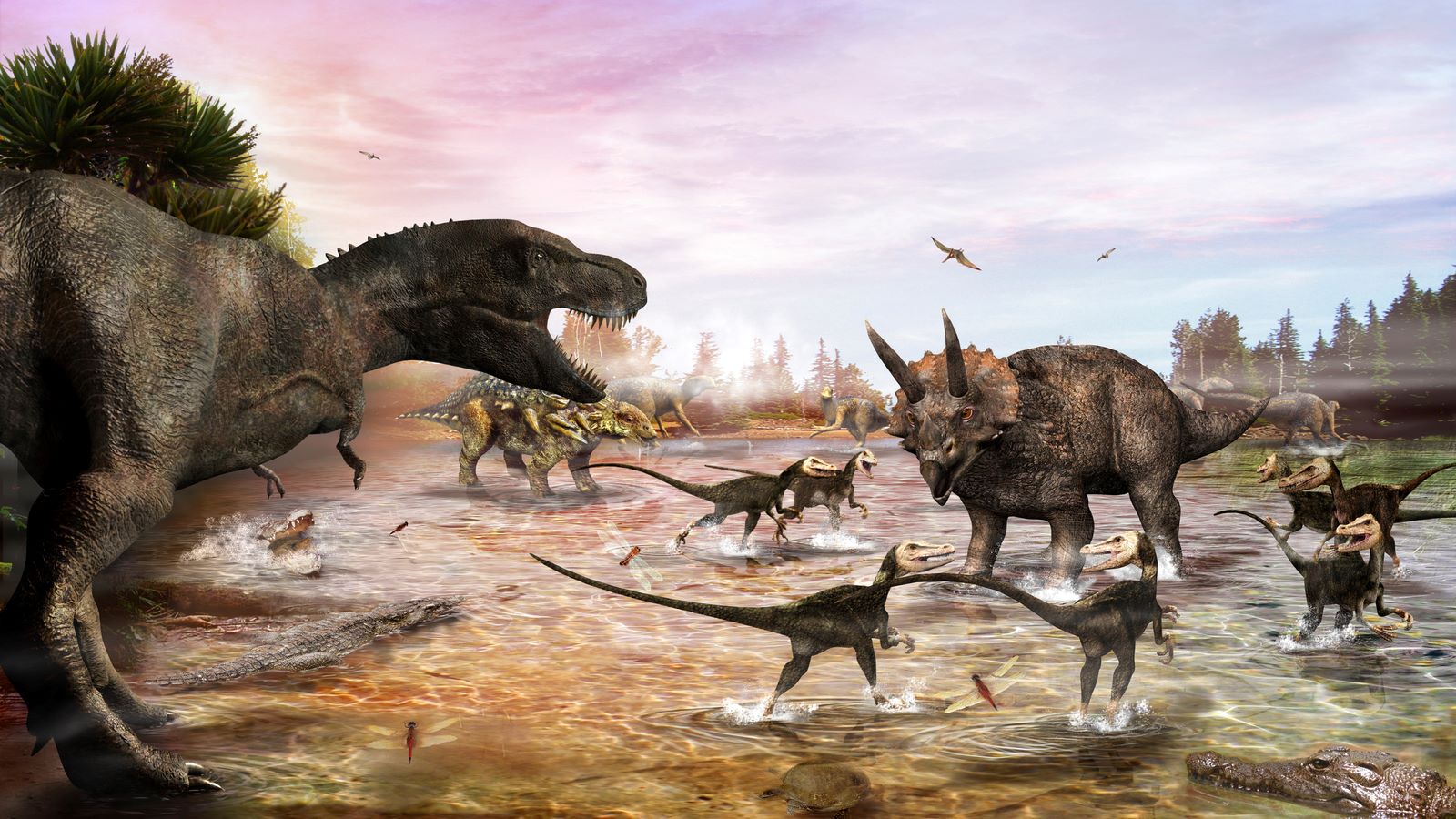
The Cretaceous Period was a time of incredible change and evolution on Earth. Spanning from about 145 to 66 million years ago, this era saw the rise and fall of some of the most iconic dinosaurs, like the mighty Tyrannosaurus rex and the long-necked Brachiosaurus. But dinosaurs weren't the only stars of the show. Flowering plants began to flourish, drastically altering ecosystems and paving the way for future plant life. The period ended with a bang—literally—when a massive asteroid impact led to the extinction of nearly 75% of Earth's species. Curious about what else happened during this dynamic time? Here are 15 fascinating facts about the Cretaceous Period that will blow your mind!
The Cretaceous Period: An Overview
The Cretaceous Period was a fascinating time in Earth's history. Spanning from about 145 to 66 million years ago, it was the last period of the Mesozoic Era. Dinosaurs roamed the land, and the first flowering plants began to bloom. Let's dive into some intriguing facts about this period.
Dinosaurs Dominated the Land
Dinosaurs were the undisputed rulers of the Cretaceous landscape. They came in all shapes and sizes, from the towering giants to the small, agile predators.
- The Tyrannosaurus rex lived during the late Cretaceous and was one of the largest land predators ever.
- The Triceratops had three distinctive horns and a large bony frill, making it one of the most recognizable dinosaurs.
- The Velociraptor, though smaller than often depicted in movies, was a swift and cunning predator.
Marine Life Flourished
The oceans teemed with life during the Cretaceous. Marine reptiles and other sea creatures thrived in the warm, shallow seas.
- The Mosasaurus was a massive marine reptile that could grow up to 50 feet long.
- Ammonites, with their spiral shells, were abundant and are now commonly found as fossils.
- The Plesiosaurus had a long neck and flippers, making it an efficient swimmer.
The Rise of Flowering Plants
The Cretaceous saw the first appearance of angiosperms, or flowering plants. This was a significant evolutionary step for plant life on Earth.
- Magnolias are among the oldest flowering plants, dating back to the Cretaceous.
- Beech trees also made their first appearance during this period.
- The spread of flowering plants led to the evolution of new insect species, including bees.
Climate and Geography
The Earth's climate and geography were quite different during the Cretaceous. The continents were not in their current positions, and the climate was generally warmer.
- Pangaea, the supercontinent, had already begun to break apart, forming the early versions of today's continents.
- There were no polar ice caps, resulting in higher sea levels and extensive shallow seas.
- The climate was warmer and more humid, supporting lush vegetation and diverse ecosystems.
The Cretaceous-Paleogene Extinction Event
The Cretaceous Period ended with a bang, literally. A massive extinction event wiped out many species, including the dinosaurs.
The Cretaceous Period's Legacy
The Cretaceous Period left a lasting mark on our planet. From the rise of flowering plants to the dominance of dinosaurs, this era was a time of significant change. The period ended with a bang, quite literally, as an asteroid impact led to the mass extinction of many species, including the mighty dinosaurs. This event paved the way for mammals to thrive and eventually led to the evolution of humans.
Understanding the Cretaceous Period helps us appreciate the dynamic nature of Earth's history. It reminds us that our planet has undergone dramatic transformations and will continue to do so. The fossils and geological evidence from this time provide valuable insights into the past, helping scientists predict future changes. So, next time you see a dinosaur fossil or a blooming flower, remember the incredible journey of life during the Cretaceous Period.
Was this page helpful?
Our commitment to delivering trustworthy and engaging content is at the heart of what we do. Each fact on our site is contributed by real users like you, bringing a wealth of diverse insights and information. To ensure the highest standards of accuracy and reliability, our dedicated editors meticulously review each submission. This process guarantees that the facts we share are not only fascinating but also credible. Trust in our commitment to quality and authenticity as you explore and learn with us.


